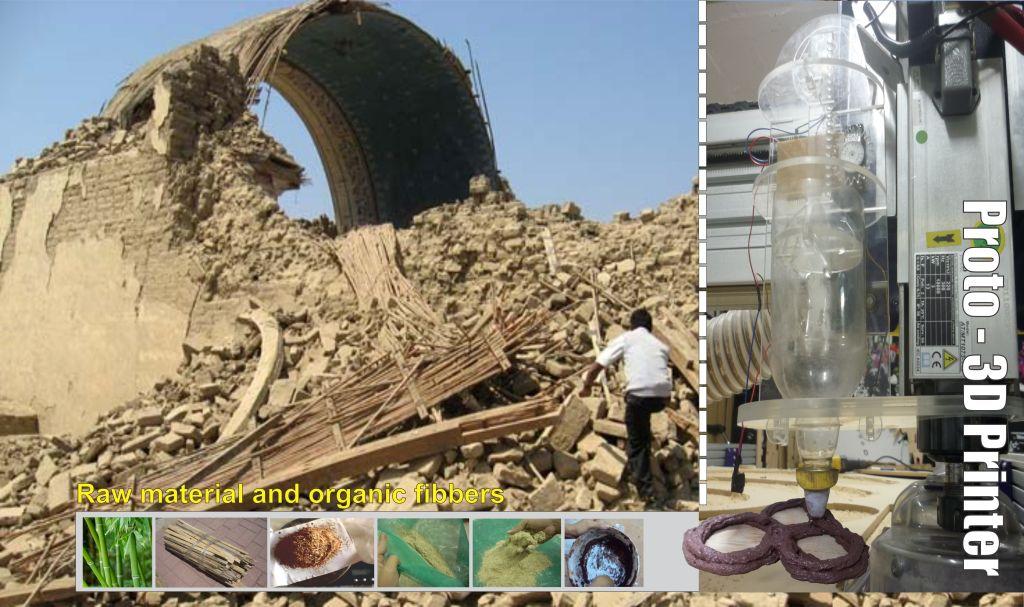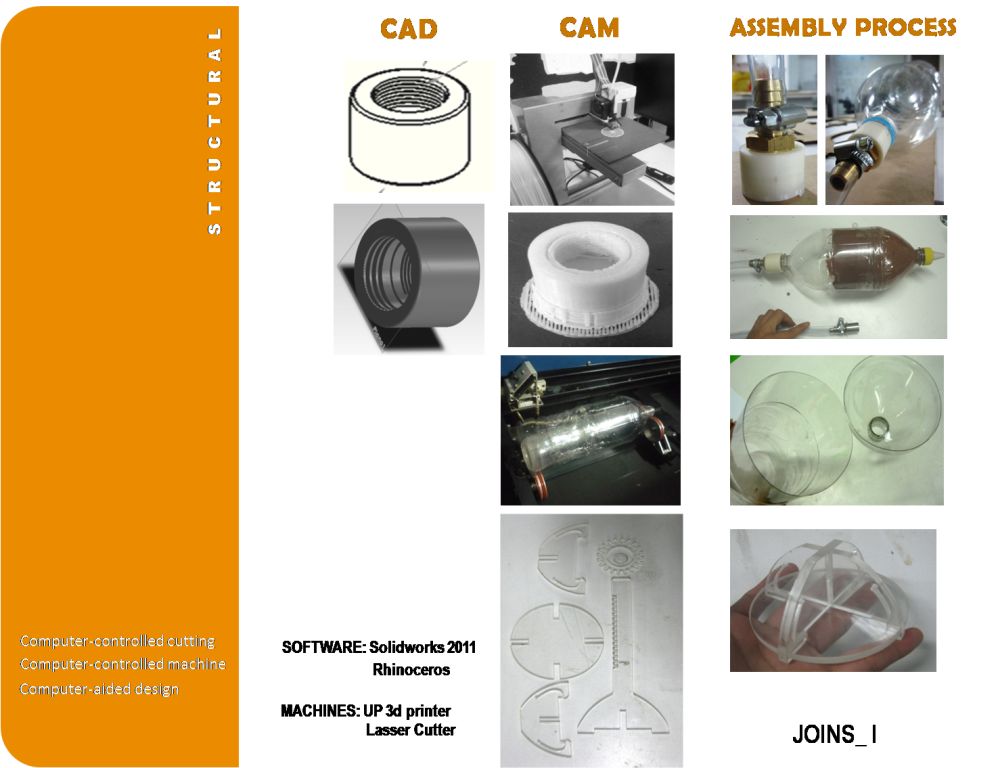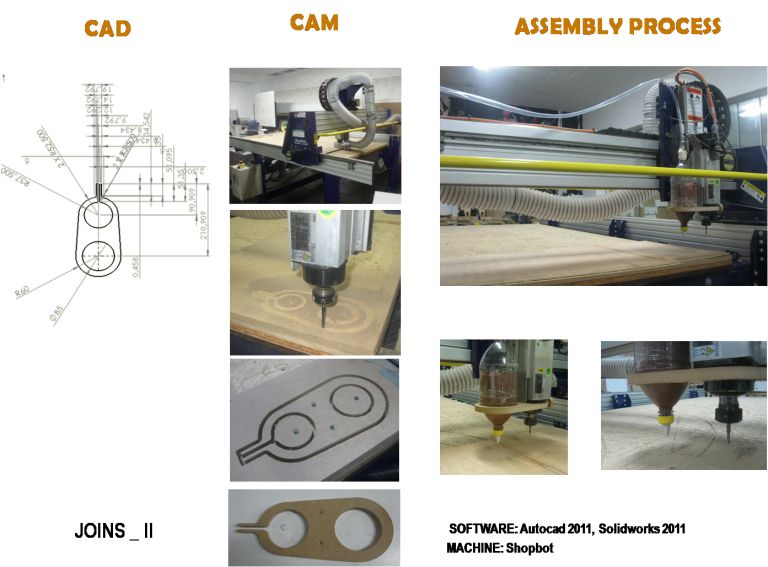
Our final project aims to be part of a production cycle that provides network support to local planning. Among the topics learned in the Fab Academy, we have been able to develop the first prototypes inspired by the study of existing 3D printing machines in the Fab Labs
While the project tried to make an individual (separate) machine, we adapt our design to one of the machines in the lab, in this case the Shopbot, as part of the proposal, allowing us to do the work of the axes X, Y, and Z.
3d printing system is based on an injection system which utilizes gravity and a further thrust force (in the case of the prototype shown the air pressure) depositing achieved basic printing.
The design of the first prototypes has sought the most economic possibilities considering an organic material as printing compound. One of the most important topics was Molding, casting and composites as we could experiment with the generation of several compounds until we arrived at the most suitable consistency for printing. We experimented with traditional clay mixtures, the material undergoes a drying process faster, when is in contact with the environment, which allows to deposit a new layer without crumble the design.Parallel run tests were done using electronic devices. We designed a pneumatic piston which was programmed with a Fab-Arduino to simulate the behaviour of the injection device. The latest tests showed that the design can be even more simple using pressure sensors in the injection process that notify the failure of the injection device or an obstruction for the movement or lack of material in the container.


Structural: With exception of material´s tank, all 3d printer prototype´s componentes including the chassis, were made in acrylic 5mm. (replace mdf ). Chassis bottle
Joints: The coupling of the bottle was drawing in Solidworks and was printed in 3D.This piece is the union that fits together with nipple (that is attached to a hose connected to the compressor.
Material´s tank: The final tank did made from recycled bottles (see the following tutorial: http://www.aircommandrockets.com/construction_6.htm )
Electronic: the X-duino board was programing with arduino


We can say that we still have a long way to go, but the adventure of the Fab Academy allowed us to gain experience and skills to potentiate multiple application possibilities of the project, even for use within the same laboratory.
Finally I extend my sincere thanks to all those who used to start the race.
Keep walking ...


